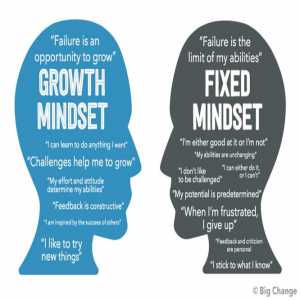Create An Interactive Presentations That Engage Your Audience

The key to a successful presentation lies in interactivity. By making your presentation more engaging, you can ensure your message resonates with your audience long after you finish speaking.
Interactive presentations are not just about flashy visuals—they’re about making your audience feel involved, valued, and engaged.
Definition of Interactive Presentation
An interactive presentation is a type of presentation designed to actively engage the audience through interactive elements, allowing for real-time interaction, feedback, or dynamic navigation of content.
An interactive presentation actively engages the audience, transforming them from passive listeners into active participants.

Unlike traditional linear presentations, interactive presentations enable flexibility and responsiveness, often adapting to the audience’s preferences or needs.
In this article, we will explore ten essential strategies to help you create interactive presentations that captivate and involve your audience.
1. Understand Your Audience
Before diving into designing your presentation, it’s crucial to understand who your audience is
and what they expect from your talk. Ask yourself:
- What is their level of familiarity with the topic?
- What challenges or pain points do they face?
- How can your presentation provide value?
- What style of interaction suits them best—formal, conversational, or workshop-style?
Knowing your audience will help you tailor the content, tone, and level of interaction accordingly.
2. Start with an Engaging Hook
The first few minutes of your presentation set the stage for audience engagement. Consider these powerful ways to start:
- Ask a Provocative Question: “What if I told you that 80% of presentations are forgotten within 24 hours?”
- Tell a Short Story: A personal anecdote or case study related to your topic can create an emotional connection.
- Use a Live Poll: Ask your audience a quick question using tools like Slido or Mentimeter.
- Show a Powerful Visual: A compelling image, infographic, or GIF can set the tone.
- Play a Short Video: A quick, relevant video can capture interest instantly.
An engaging introduction encourages the audience to stay invested in your content.
3. Incorporate Audience Interaction Throughout
Rather than waiting until the end for questions, make engagement a continuous process:
A. Live Polling and Surveys
Use real-time polls to gauge audience opinions and adapt your presentation accordingly.
B. Clickable and Non-Linear Presentations
Instead of a rigid slide-by-slide structure, let your audience guide the discussion.
C. Gamification with Quizzes and Competitions
Turning learning into a game increases engagement.
D. Encourage Discussion and Brainstorming
Use think-pair-share, breakout rooms, or collaborative whiteboards to boost participation.
4. Use Storytelling to Enhance Engagement
Storytelling helps to humanize your presentation and make it more relatable. Instead of bombarding your audience with facts and data, weave them into a narrative.
Structure your content in a way that takes your audience on a journey, incorporating real-world examples and emotional connections to drive your message home.
5. Utilize Motion, Animation, and Multimedia
Animation and motion elements can make presentations more engaging when used strategically:
- Reveal information step by step rather than all at once.
- Use motion graphics to illustrate complex ideas.
- Embed GIFs, videos, or short animations to highlight key concepts.

6. Make It Conversational and Interactive
Instead of delivering a one-way lecture, create a dialogue:
- Use a friendly, natural tone.
- Ask open-ended questions throughout.
- Acknowledge responses and adapt your content in real time.
- If presenting online, monitor the chat and respond to audience input.
Encouraging participation makes your audience feel valued and engaged.
7. Leverage Technology for Greater Engagement
Modern presentation tools offer advanced features to enhance interactivity:
- Augmented Reality (AR) and Virtual Reality (VR) allow immersive experiences.
- AI-driven assistants can offer personalized audience feedback.
- Interactive touchscreens let participants engage directly with content.
Using the latest technology can elevate your presentation beyond traditional slides.
8. Psychological Tricks to Maintain Audience Attention
Understanding cognitive principles can help you hold your audience’s focus:
- The Rule of Three – Present ideas in sets of three for better retention.
- Pattern Interrupts – Unexpected changes (videos, humor, or movement) prevent monotony.
- Micro-breaks – Allow short moments for reflection or discussion to sustain engagement.
Applying these techniques ensures your audience remains attentive and involved.
9. Adapt for Hybrid and Remote Audiences
With virtual and hybrid events becoming more common, it’s essential to engage both in-person and remote attendees:
- Use dual engagement methods like live chat and Q&A for online viewers.
- Incorporate real-time collaboration tools such as Miro or Google Jamboard.
- Ensure strong audio-visual quality so remote audiences feel included.
A hybrid-friendly approach ensures no audience member feels disconnected.
10. End with a Strong Call to Action (CTA)
Leave your audience with a clear next step:
- Summarize key takeaways.
- Provide additional resources (links, PDFs, further reading).
- Encourage them to apply what they’ve learned.
- Ask them to participate in a follow-up discussion or challenge.
A strong CTA ensures your audience walks away with value and a sense of purpose.
Next time you prepare for a presentation, experiment with these techniques and watch your audience engagement soar!
Author Bio
Writer comprises full-time and freelance writers that form an integral part of the Editorial team of Hubslides working on different stages of content writing and publishing with overall goals of enriching the readers' knowledge through research and publishing of quality content.
Article Comments
No Comments!
At present there are zero comments on this article.
Why not be the first to make a comment?
Similar Articles
Sponsor
Search Articles
Experts Column
Latest Articles
Featured Articles
Most Popular Articles












